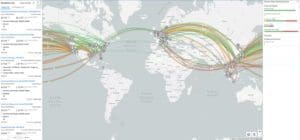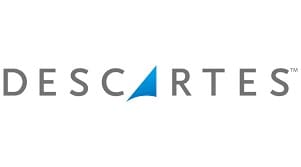
When it comes to driving supply chain agility there are several solutions that are important, but the key solution is a Multi-enterprise Supply Chain Network (MSCN). A multi-enterprise supply chain network platform provides network-based order fulfillment applications and/or advanced network-based supply chain risk analytics. It is a solution built on a public cloud, many-to-many architecture that supports a community of trading partners. Many-to-many can also refer to many participants in a network accessing many, many sources of event data critical to supply chain operations through a public cloud network.
COVID of course taught companies the need for agility. But even in more normal times, a supply plan usually can’t be fully executed. Stuff happens. There can be surprises that potentially offer a better upside: demand is higher than expected, it is possible to raise prices without affecting demand based on what is happening with competitor products, technology has allowed manufacturing capacity to ramp up faster than expected, etc. But, more commonly there are downside surprises: customers lower the volume they want on an order, delay their order, there are manufacturing problems, logistics problems, staffing issues, to name the most obvious downside risks.
Based on ARC Advisory Group’s new global market report, the three largest providers of MSCN, listed alphabetically, are Descartes, E2open, and Infor Nexus. All have market shares of over 10% in a crowded market.

Descartes
Descartes is a public company headquartered in Waterloo, Canada. Descartes provides multi-tenant, cloud-based solutions focused on improving the productivity, performance, and security of logistics-intensive businesses. Customers use their modular, SaaS solutions to route, schedule, track, and measure delivery resources; plan, allocate and execute shipments; rate, audit, and pay transportation invoices; access global trade data; file customs and security documents for imports and exports; and complete numerous other logistics processes.
The Descartes Global Logistics Network (GLN) is the world’s largest, collaborative multimodal logistics messaging network. Hundreds of thousands of trading partners, logistics services providers, and carriers use the GLN to connect and collaborate through 24.6 billion transactions annually. The network supports a wide array of messaging types including real-time GPS, EDI, and API-based capacity requests, bookings, statuses, and customs messages. Unlike other solutions supporting EDI, the GLN operates in real-time and leverages data from integrations with thousands of connected ERP, ecommerce, telematics systems, data services, and solution partners. Real-time location and IoT data such as condition statuses (e.g., temperature, shock, and humidity) are available through the GLN for over-the-road transportation via Descartes MacroPoint and global air freight via Descartes BLE for high-value shipments for major airlines and ground handling agents at 450 airports worldwide.
E2open
E2open was founded in 2000 and is headquartered in Austin, Texas. E2open became a public company (NYSE: ETWO) in February 2021. The company had 3,800 employees in their last fiscal year. E2open is a provider of cloud-based, supply chain software. Their solutions include omni-channel, demand sensing, supply planning, global trade management, transportation management, collaborative manufacturing, and supply management. Their platform combines their network and software applications.
E2open acquired BluJay Solutions in May of 2021 for $1.7 billion. BluJay provides transportation management and managed transportation solutions. They have a public cloud architecture and the TMS revenues are in the scope of this report; BluJay’s revenues were included in E2open’s MSCN revenues.
The network supports downstream channel partners, upstream supply partners, and logistics partners. The channel ecosystem network encompasses roughly 1 million distribution, reseller, and retailer partners. The supply ecosystem connects over 630,000 manufacturers and suppliers. Over 12 billion transactions per year occurred on the network. The company has partnered with Shippeo to enhance their ability to provide real-time transportation visibility.
Significant product enhancements include new environmental, social, and governance (ESG) features to allow planners to make emissions-informed decisions at the time of booking transportation, and a voucher payment process to compensate truckers for container moves in countries where the traditional prepaid model is not permitted by law.

Infor Nexus
Infor is a multi-national enterprise software company, headquartered in New York City, in the US. Infor focuses on business applications for organizations delivered via cloud computing as a service. They are the third largest provider of enterprise applications. In February 2017, Koch Equity Development LLC invested $2.68 billion in Infor. The company has about 18,000 employees; over 1,000 employees support the Nexus solution.
Infor Nexus is one of their solutions. 65,000 companies use the platform. $1 trillion in trade is managed and $50 billion in payments is transacted on this platform. There are over 125 million annual transactions including shipments, orders, packing lists, receipts, payments, and more.
Infor uses a knowledge graph to map parties, places, and products into a digital twin. A knowledge graph does not start with a model of the supply chain, it creates that model based on what the data shows to be true. In practice, this means that Nexus does not start by having a model that says that the ports are here, the suppliers are located here, and so forth. It is a supply chain model built on the fly based on what is actually occurring in the network. A knowledge graph allows the digital twin to be more accurate. Every transaction writes to this in- memory digital twin. As an in-memory solution, Nexus allows for Big Data to be accessed very quickly.
The Nexus model can also provide the kind of data that digital twins that are based on a static planning model struggle to provide true lead times (and other supply chain throughput/cycle time metrics). These parameters are critical for the creation of optimum plans. Lead times in planning systems are often measured, input into the system, and assumed to be true from that point forward.
The Nexus system can measure the changes that are occurring and keep the lead times up to date. The changes measured in the Nexus solution can be based just on the data of one company. For example, when one company orders from a supplier in Asia to be delivered by a certain ocean carrier, the lead time is 24 days. But, if a company wants to work with a new supplier, and that supplier is in the network, metrics on that carrier also exist. Network alerts, based on network data rather than a company’s own data, are also more accurate.
The Nexus solution allows various supply chain personnel – both internal to a company and among key trading partners to get alerts that are pertinent to their responsibilities. The work to resolve a problem is often executed by applications. The greater number of applications that must be used, the more difficult it is to respond. In many cases, problems can be resolved in the Nexus solution.
Infor is building out the options on what a person with a designated job could do to resolve a problem or opportunity. In some cases, the resolution can be executed on the spot. In some cases, collaboration with partners or other internal departments is necessary to make and execute the best decision. Infor enables collaboration and execution with internal and external partners in its MSCN. Infor is also working toward tightly integrating their MSCN and planning solutions. Their goal is to update the supply chain planning model based on what is happening in the network model.
















